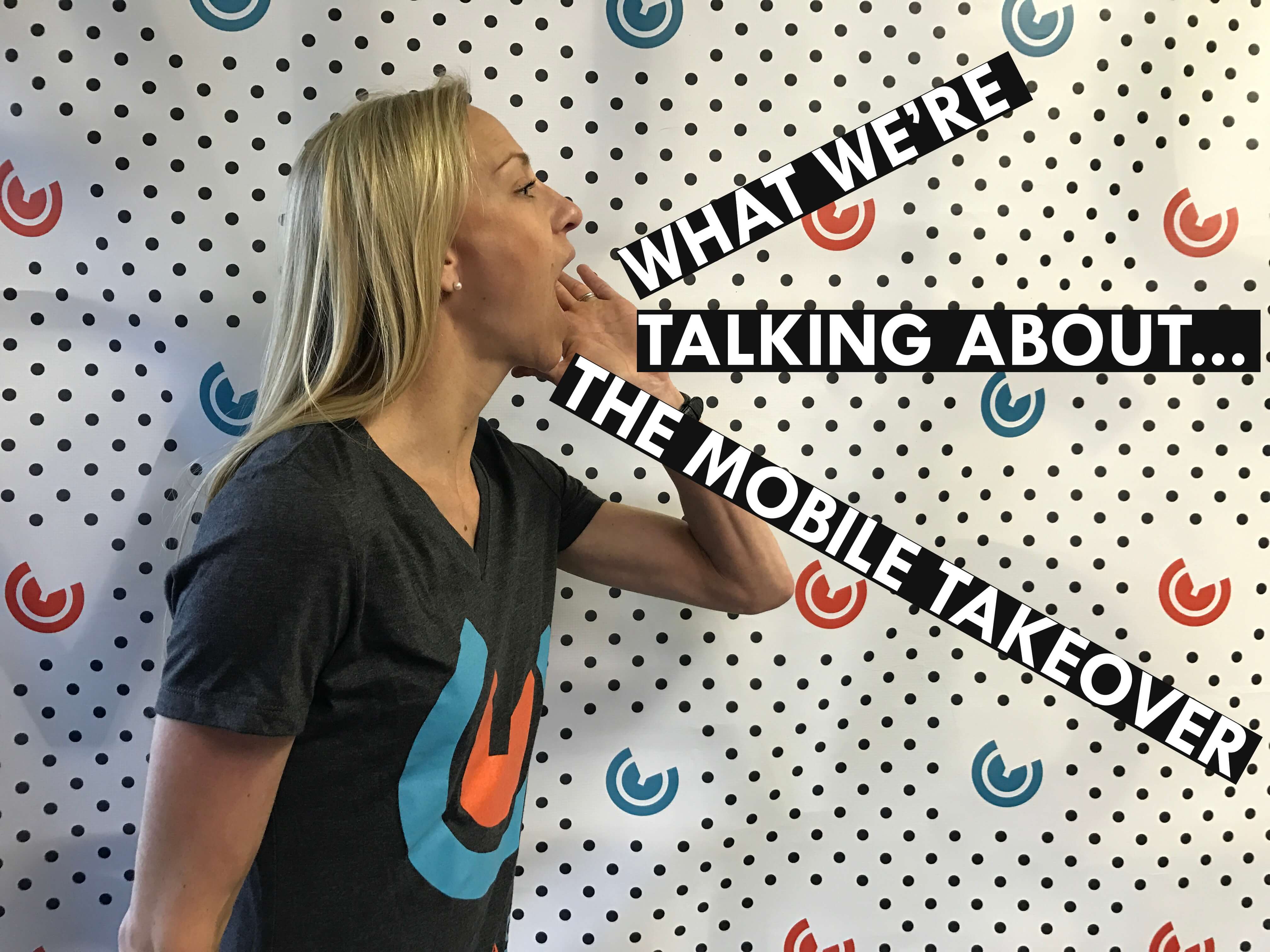Pro tips for effortless HubSpot implementation
HubSpot is a powerhouse, combining CRM, marketing, service, sales, operations, and other tools into one ecosystem. However, setting it up can feel...
I know what I am looking for, and would like to chat.
A team of data-driven marketers obsessed with generating revenue for our clients.
Because the proof is in the pudding.
At Campaign Creators we live by three principles: Autonomy, Mastery, Purpose.
5 min read
 Campaign Creators
:
4/22/25 1:33 PM
Campaign Creators
:
4/22/25 1:33 PM

Re-platforming your CRM is no small feat, especially when transitioning to a platform as robust and comprehensive as HubSpot. For enterprise businesses, the process of CRM migration comes with its own unique challenges. These include mapping complex data structures, ensuring data accuracy, and realigning operational workflows to fit the new system. Additionally, integrating existing tools with the new platform can add layers of complexity.
Worse yet, many companies underestimate the hidden fees, resource demands, and manual inefficiencies that can surface during migration. Without proper planning and execution, these issues can result in costly setbacks, delayed timelines, and missed business goals. An effective migration strategy is critical to ensure a smooth transition and avoid these pitfalls.
This guide focuses on one critical aspect of platform migration often overlooked but highly impactful: asset mapping. We'll dissect the usual hurdles of migrating assets, highlight potential inefficiencies, and explore strategies to streamline your migration with transparency and technical precision.
CRM migrations or marketing automation re-platforming, especially to platforms like HubSpot, are notorious for unexpected expenses and unforeseen challenges. The process involves more than just transferring important data; integrations with existing systems require careful oversight to ensure everything works seamlessly.
Additionally, assets (i.e., workflows, marketing emails, templates, etc.) may need to be rebuilt to ensure your current marketing and sales efforts continue working without skipping a beat. Data inaccuracies during migration can also create inefficiencies, leading to operational delays and impacting key business functions like sales, marketing, and customer service. Without proper planning and execution, these issues can ripple through your organization, causing frustration and additional costs.
To mitigate these risks, you should approach CRM migration with a concrete strategy, using tools and expertise to stay on track. Organizations can protect their data integrity, optimize productivity, and achieve long-term success with a CRM migration project plan.
Mapping assets isn’t just about transferring contact information; it’s the foundation for successful migrations. It includes everything from marketing emails, landing pages, and automation workflows to custom objects, segmentation strategies, and data integrations.
These components form the backbone of your system’s functionality, ensuring seamless communication, efficient operations, and a personalized user experience. Each piece needs to be replicated to support your marketing and business strategies. You risk losing valuable data and compromising your overall system performance without accurate mapping.
The challenges associated with asset migrations highlight the importance of leveraging advanced tools and expertise to streamline the process. Automating workflows, minimizing human error, and ensuring a strategic approach can significantly reduce inefficiencies and risks. By adopting the right solutions, businesses can safeguard operational continuity and achieve successful migration outcomes.
Achieving success in CRM migration is like embarking on a carefully planned journey to a new city. Without a clear map and directions, you may end up getting lost. A successful CRM migration requires careful planning, a detailed strategy, and the right tools to navigate obstacles.
And with the right approach, the transition to a new system feels effortless, unlocking opportunities and creating a solid foundation for growth.
Below, we detail actionable steps to streamline the process without sacrificing accuracy.
Create a comprehensive inventory of all existing CRM, marketing and sales assets to understand your current setup clearly. This should include emails, workflows, lead scoring models, custom objects, and other tools or platform integrations. Take the time to thoroughly document each item, noting its purpose, current state, and any dependencies.
Once you’ve listed everything, categorize these assets into two buckets: those actively in use and those outdated or no longer relevant. This process will help you identify areas for optimization and ensure your automation platform is running as efficiently as possible.
Categorize assets into two buckets:
This segmentation ensures no vital operations are disrupted while allowing room for growth.
Use a consistent and well-thought-out approach to field mapping to ensure seamless data flow between systems. Platforms like HubSpot offer advanced custom mapping options that should be tailored to reflect the structure of your business.
Ensure that key properties such as dropdown menus, binary fields, and integrations are correctly aligned. This enhances data accuracy and prevents potential miscommunication or compatibility issues. A well-executed field mapping strategy can save time, improve efficiency, and ensure reliable data.
Try using these data mapping rules as a starting point for your CRM data migration:
Opt for HubSpot CRM migration services that include automated asset migration tools to streamline the process and save time. These tools can reduce manual efforts by automating data transfer, ensuring a smooth transition between systems.
Migration planning tools reduce workloads and improve asset mapping accuracy, helping you avoid errors and maintain quality. Whether upgrading your CRM or switching to a new platform, these tools make the migration process far more efficient and hassle-free.
After completing the migration, conduct thorough testing to ensure everything functions as expected. Verify that all workflow, automation, and integration mappings are working correctly and delivering the intended results. Test landing pages to ensure they render correctly across devices and browsers. Ensure emails are being sent as scheduled, with the correct formatting, content, and recipient lists.
Additionally, confirm that all contact associations and data relationships remain intact, avoiding disruptions in your system's operations. Comprehensive testing at this stage is crucial to identify and resolve any issues before moving forward.
Maintain detailed and organized documentation of blueprints for mappings, schemas, and transition plans. Include clear annotations, version histories, and key decisions made during development. This comprehensive roadmap ensures ongoing efficiency during daily operations, simpler troubleshooting, easier onboarding, and greater adaptability to future changes or upgrades.
Adopting the right technology is the key to reducing inefficiencies, minimizing costly errors, and saving valuable time during migrations. Advanced tools can replicate complex workflow configurations, handle intricate schema customizations, and accurately map custom properties for a smooth and seamless transition. By leveraging these capabilities, teams can focus on driving progress rather than getting bogged down by technical hurdles.
A successful migration strategy hinges on leveraging advanced tools that ensure efficiency, accuracy, and cost-effectiveness. Businesses can seamlessly transition between platforms without compromising critical workflows or data integrity by prioritizing real-time syncing, custom object handling, and cost transparency.
Migrating to a new platform can be complex, often raising questions about logistics, timelines, and potential risks. Addressing common concerns and providing clear, actionable insights helps ensure stakeholder buy-in. Below are answers to some frequently asked questions to guide your migration efforts.
Assets like customer data, workflows, lead scoring models, marketing campaigns, email templates, custom properties, and automation setups all require thorough mapping.
Invest in a platform offering fixed pricing, or choose tools that provide upfront cost breakdowns. Automation in asset mapping also reduces reliance on costly manual labor.
Yes, HubSpot, paired with tools like MigrateMyCRM, excels at migrating workflows, custom objects, and marketing automations. Its advanced integrations minimize downtime and ensure seamless transitions.
Use tools like Data Sync to maintain ongoing synchronization between previous and new systems. Regular audits post-migration are also pivotal to ensure data integrity.
Successful CRM migration is not merely about transferring data; it’s about enhancing efficiency while preserving brand integrity. An organized CRM migration plan focused on accurate asset mapping reduces costs, ensures operational consistency, and sets the stage for long-term growth.
You can eliminate guesswork and hidden costs by leveraging HubSpot migration services or advanced tools like schema replicators. Interested in simplifying your migration to HubSpot? Explore how our CRM migration services can make asset mapping seamless and cost-effective.

HubSpot is a powerhouse, combining CRM, marketing, service, sales, operations, and other tools into one ecosystem. However, setting it up can feel...

Hi there! Here at Campaign Creators, we want to thank all of those that joined us in helping celebrate the launch of SDCHUG. We had a lot of fun and...

Smartphones are getting so smart that we rely on them so much for information and being in contact with others. Last year, Americans spent an average...